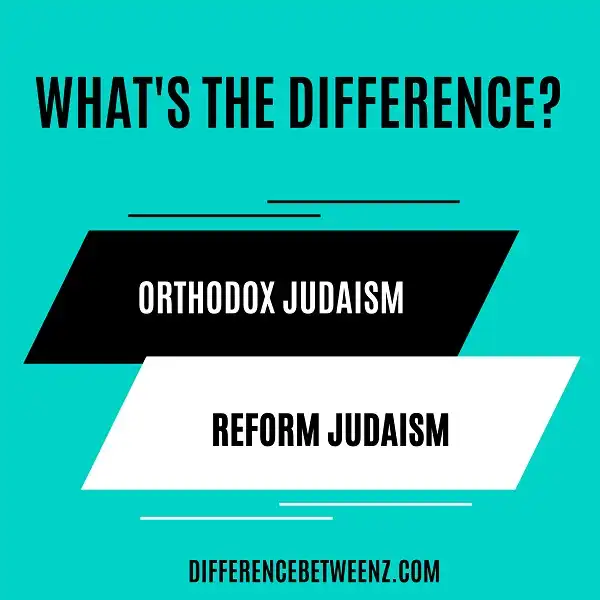Orthodox and Reform Judaism are two of the most popular denominations of Judaism. While they share some similarities, they also have some major differences. In this blog post, we’ll take a closer look at these two branches of Judaism and discuss some of the key differences between them.
What is Orthodox Judaism?
Orthodox Judaism is a branch of the Jewish faith that adheres to a strict interpretation of the Torah, the holy book of Judaism. Orthodox Jews believe that the Torah is the word of God and must be followed literally. As such, Orthodox Judaism upholds many of the traditional practices and beliefs of Judaism, such as keeping kosher, observing the Sabbath, and performing Jewish rituals. Orthodox Judaism also places a strong emphasis on studying the Torah and Talmud, and on living in accordance with Jewish law. Orthodox Jews make up a minority of the overall Jewish population, but they are widely represented in Israel, where Orthodoxy is the dominant form of Judaism.
What is Reform Judaism?
Reform Judaism is a progressive movement within Judaism that emphasizes individual autonomy and freedom of belief and practice. Reform Jews reject the notion of Jewish law as binding, instead viewing it as a set of guidelines to be followed or adapted according to the needs and values of each individual. Reform Jews are also committed to social justice, promoting equality and inclusion in all areas of society. In recent years, the Reform movement has become increasingly inclusive, welcoming interfaith families and LGBTQ+ Jews into the fold. Reform Judaism is one of the largest denominations of Judaism in the world, with over two million followers worldwide.
Difference between Orthodox and Reform Judaism
Orthodox and Reform Judaism differ in a number of ways. Orthodox Judaism is a more traditional form of religion, and its followers tend to be more conservative in their beliefs and practices. Reform Judaism, on the other hand, is a more modern form of religion, and its followers are generally more open to change. One key difference between Orthodox and Reform Judaism is in their approach to religious law. Orthodox Jews believe that the Torah, or Jewish law, is divinely inspired and should be followed strictly.
Reform Jews, by contrast, believe that Jewish law should be interpreted in light of changing circumstances. This difference often leads to different views on social issues such as gender equality and interfaith marriage. Orthodox Judaism also tends to place more emphasis on ritual and tradition, while Reform Judaism generally puts more emphasis on individual choice and self-expression. As a result, Orthodox and Reform Jews often worship in different ways and have different customs and traditions.
Conclusion
The Reform movement in Judaism began in Germany in the early 1800s as a response to the perceived stagnation of Orthodox Judaism. Since then, it has become one of the most popular expressions of Jewish faith in North America and around the world. While there are many similarities between these two branches of Judaism, there are also some key differences. Let’s take a look at some of the main ones.


